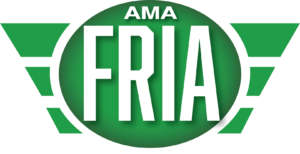
This page has been adopted by Chat GPT, an ai whose focus will be on educating new people to the sport of drone flying including some training techniques, best ‘trainer’ drones to purchase and what a typical progression is from a beginning drone to more advanced drones. Human edits were made to fill in areas that Chat GPT failed to cover.
Introduction to Flying RC Drones
Overview RC drones, also known as remote control drones or unmanned aerial vehicles (UAVs), have gained immense popularity in recent years. These small, unmanned aircraft offer enthusiasts and professionals alike a thrilling flying experience and numerous applications. Whether you’re interested in recreational flying, aerial photography, or even racing, understanding the basics of flying RC drones is essential. This web page serves as an introduction to flying RC drones, covering important aspects such as drone types, controls, Federal law requirements, safety guidelines, and tips for beginners.
Types of RC Drones RC drones come in various types, each designed for specific purposes. Here are a few common types:
- Quadcopters: Quadcopters are the most popular and widely used type of RC drone. They feature four propellers arranged in a square configuration, providing excellent stability and maneuverability.
- Fixed-Wing and Rotary Wing Aircraft: These aircraft resemble traditional aircraft and helicopters. They are now included in the definition of “Drones” in that they are uncrewed aerial vehicles. They generate forward thrust in various ways and lift using conventional wings or rotor blades.
- Hexacopters and Octocopters: These drones have six and eight propellers, respectively, offering increased lifting capacity and stability, making them suitable for heavy payloads or professional applications.
- FPV Racing Drones: FPV (First Person View) racing drones are designed for high-speed racing competitions. They have a streamlined design, powerful motors, and onboard cameras to provide a real-time video feed to the pilot. If flown outdoors, the drone must remain within visual line-of-sight of the pilot and the required safety spotter.
Drone Controls Before taking to the skies, understanding the basic controls of an RC drone is crucial. Most drones have the following key components:
- Transmitter: The transmitter is the handheld controller that the pilot uses to send commands to the drone. It consists of joysticks, switches, and buttons to control various functions like throttle, pitch, roll, and yaw.
- Flight Modes: Many drones offer different flight modes, such as manual mode, altitude hold, or GPS-assisted mode. These modes affect the drone’s behavior and stability in flight.
- Video Capture: Due to their inherent stability in flight, drones can be used to capture video and/or pictures and transmit those images in real-time to a receiver which is normally part of the transmitter.
- Stabilization Systems: Drones often have built-in stabilization systems, such as gyroscopes and accelerometers, which help maintain stability and level flight.
REMEMBER: Southern Eagle Squadron offers a fabulous flying space for drone operations. Check out out field HERE (as seen from a drone, of course)!
Safety Guidelines Flying RC drones safely is of utmost importance to protect people, property, and the environment. Here are some essential safety guidelines:
- Join the Academy of Model Aeronautics. The AMA provides important safety guide lines and insurance for member drone operators. This membership is required by all clubs, including the Southern Eagle Squadron, chartered by the AMA.
- Learn the Laws: US Federal law requires operators of all sUAS, weighing 250g or more to register with the FAA at faadronezone-access.faa.gov/#/. It is also a US Federal requirement to take and hold documentation of passing the TRUST test administered by the AMA. IMPORTANT: If the drone is used for commercial purposes, i.e. you are paid for services from operation, the operator must be a certified FAA part 107 pilot. See FAA.gov for information on the compliance process.
- Choose the Right Flying Area: Download the “BeforeYouFly” app to determine FAA flight restrictions for your location. Fly in open areas away from crowds, buildings, and airports. Ensure there are no obstacles or potential hazards in the vicinity.
- Respect Privacy: Avoid flying over private property without permission and be considerate of people’s privacy. Do not record or photograph individuals without their consent.
- Pre-flight Check: Perform a pre-flight check of your drone, including battery levels, propeller condition, and proper connection between the drone and the transmitter.
- Be Aware of Weather Conditions: Avoid flying in adverse weather conditions such as strong winds, rain, or fog, as they can affect the stability and control of your drone.
Tips for Beginners If you’re new to flying RC drones, here are a few tips to get started:
- Start with a Beginner-Friendly Drone: Choose a drone specifically designed for beginners with features like altitude hold, headless mode, and stable flight characteristics.
- Practice in an Open Area: Begin flying in an open area with ample space to maneuver. This will help you gain confidence and minimize the risk of crashing into obstacles.
- Master the Basics: Focus on mastering the fundamental flight maneuvers, such as take off, landing, hovering, and basic directional control before attempting more advanced maneuvers.
- Gradually Increase Difficulty: Once you’re comfortable with the basics, gradually increase the difficulty by practicing more complex maneuvers like figure eights, circles, and controlled ascents and descents.
- Fly in Different Conditions: Practice flying in different weather conditions and environments to become adaptable to various situations. This will enhance your flying skills and make you a more confident pilot.
- Learn from Experienced Pilots: Connect with experienced drone pilots through online forums, communities, or local clubs. They can provide valuable insights, tips, and guidance to help you improve your flying skills.
- Follow Manufacturer Instructions: Read and understand the manufacturer’s instructions and guidelines for your specific drone model. This will ensure that you operate the drone safely and get the most out of its features.
- Respect Battery Life: Keep track of your drone’s battery life and ensure you have enough power for a safe return. Avoid draining the battery completely, as it can lead to an unexpected loss of control.
- Practice Safety Measures: Always keep your drone within line of sight, avoid flying near people or animals, and be cautious of obstacles. Additionally, have a plan in place in case of emergencies or unexpected incidents.
- Enjoy the Experience: Above all, enjoy the experience of flying RC drones. It’s a unique and exciting hobby that allows you to explore the skies and capture breathtaking aerial footage. Embrace the learning process and have fun!
Remember, mastering the art of flying RC drones takes practice and patience. As you become more proficient, you can explore advanced techniques, aerial photography and videography, and even participate in drone racing competitions. Happy flying!
 “Drones can be useful tools, and I am all about useful tools. One of my mottos is ‘the right tool for the right job.” – Convicted Felon Martha Stewart
“Drones can be useful tools, and I am all about useful tools. One of my mottos is ‘the right tool for the right job.” – Convicted Felon Martha Stewart 